The Martin & Coupa had business relationship from early 1840 until John Coupa’s death on May 18, 1850. The business did not make guitars but operated a “depot” at 385 Broadway in New York to cater to the large music trade in that city.
This guitar does not have a Martin & Coupa label glued to the back of the guitar beneath the sound hole. Only those guitars sold at the “depot” received the label, guitars sold by Martin to customers in other cities did not. Of the fifty or so Martin & Coupa guitars I have examined almost exactly half have the Martin & Coupa label.

On the other hand the guitar case does contain a Martin & Coupa label. Martin & Coupa used at least three different types of case labels and this one appears to be from the later period (circa 1847-1850). It is possible that the Martin & Coupa was removed from the guitar at some point but there is no evidence to support this possibility.

The design and construction features of Martin & Coupa guitars changed significantly over the 10-year period between 1840 and 1850. This guitar displays an interesting mix of both early and later period features.
Early period features (circa 1840-1845):
- Washer-type “Jerome” tuners (called washer-type because the outside surfaces of the gear cogs are smooth) with ivory “tulip-shaped” buttons
- Individual lining blocks to which the top is glued
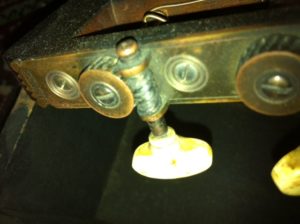
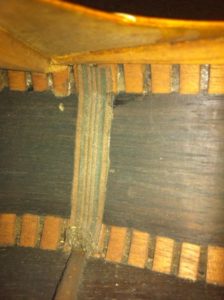
Later period features (circa 1845-1850)
- Pin bridge (earlier guitars had tie bridges)
- Pointed Spanish foot inside the guitar at the neck block (early guitars had a rectangular or rounded shape)
- Plain X-bracing with no tone bar
- Thin mahogany bridge plate with pointed ends extending underneath the X-braces (circa 1843-1850)
- Nickel silver nut (common throughout 1840-1850)
- Two-piece rosewood back with herringbone back stripe (earlier guitars often had no back stripe)
- Rectangular end block decoration with no end pin (common throughout 1840-1850)

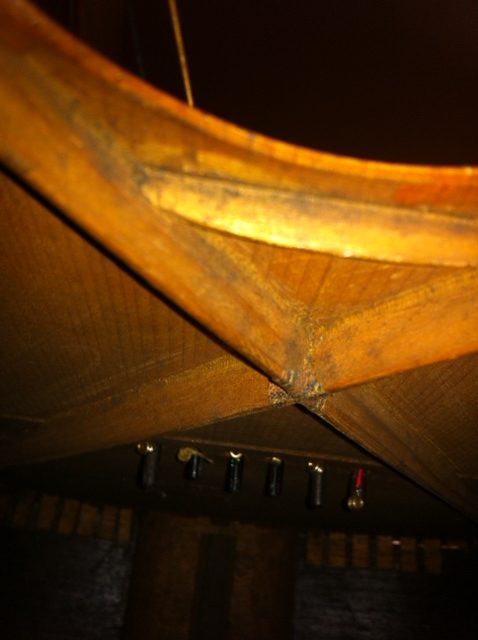
With herringbone purfling being used for the sound hole and back stripe, this design would eventually define style 21. However, the white strip of ivory purfling around the sides beneath the rosewood binding (sometimes referred to as fillet purfling) is an unusual feature for this model.
When all the features are considered I estimate this guitar was made between 1846 and 1848.
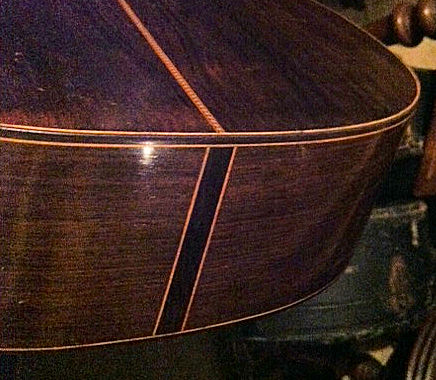
Dimensions
Total length: 37” Fingerboard width at nut: 2”
Body length: 18-3/8” Fingerboard width at 12th fret: 2 3/16”
Upper bout: 8-1/2” Diameter of sound hole: 3 5/8”
Lower bout: 12” Scale length: ?
Depth at upper bout: 3-5/8” Depth at lower bout: 4-1/4”
Back and sides: Brazilian rosewood
Top: Adirondack spruce

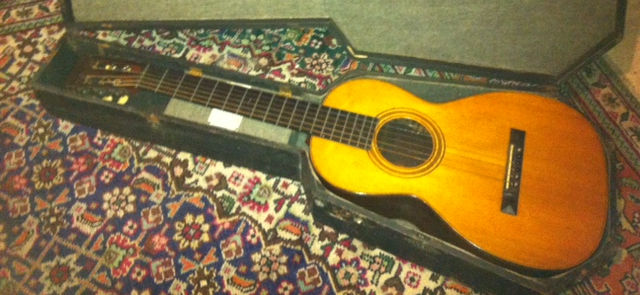
One thought on “1846-1848 Martin & Coupa Guitar”
I have enjoyed the guitars that you have posted up here on your page, this one included. Thank you!